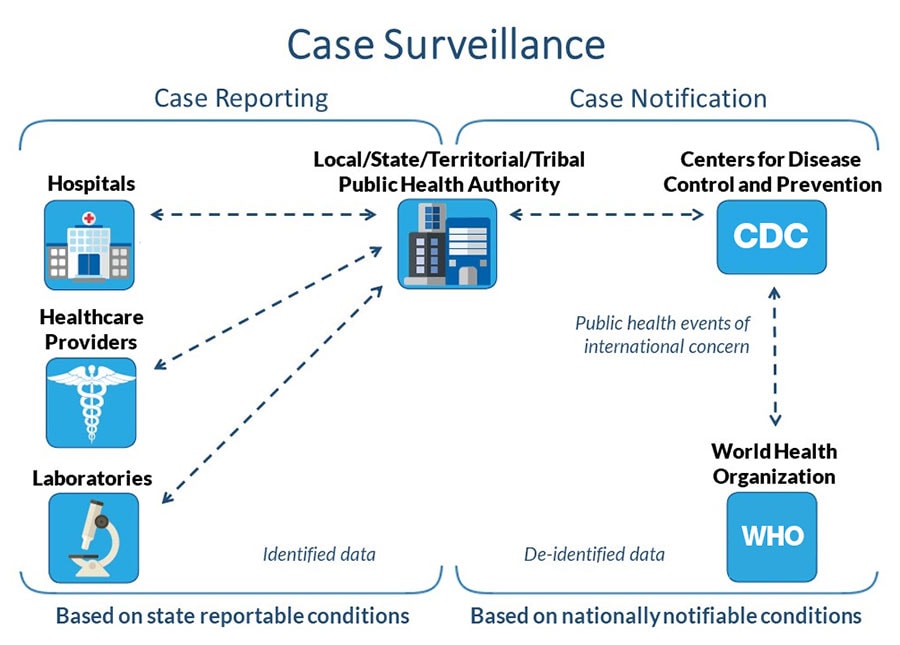COVID Data
How do government entities get the numbers they use to make policy decisions related to COVID-19? What laws govern the collection of data for those numbers?
The purpose of this guide is to answer the questions above. The guide is divided into pages, based on geographic areas, starting with local and leading to global. Use the linked tabs on the left to navigate to those pages.
The graphic below demonstrates how surveillance data in the past has moved from local to global settings. You can find data collection explanations from the U.S. Center for Disease Control website: 2020, 2024. That said, the reporting laws have changed a few times since the COVID-19 pandemic began. See the United States tab for further details.

COVID Models
As it relates to epidemiology, a model is a mathematical or conceptual understanding of a real phenomenon. They are important for their predictive ability and therefore their usefulness to decision makers. If you are investing stock in the stock market, and you have a model that is accurate months into the future, you will make a lot of money. In epidemiology, if you have an accurate model of how a disease acts and spreads over days or months, then you can create laws and policies that save lives. At the beginning of the COVID pandemic, scientists had only generic epidemiology models and nothing specific for COVID. Now, there are much more detailed and accurate models and scientists are making them better. That said, just like weather, there are too many variables to perfectly predict a pandemic. The data linked from this guide is essential to creating better models.
Missouri provided weekly COVID model results, from June 10, 2020, to September 6, 2021, by region of the state to better inform policymakers.
U.S. surveillance reporting changes during COVID
On March 29, 2020, Vice President Mike Pence asked hospital administrators to submit spreadsheets about certain COVID-19 information daily to a FEMA email address. On July 10, other guidance was given by HHS that stated information should be sent to a new system at HHS. Part of this guidance was also that hospitals were not to submit data to the CDC anymore. A modified version of that guidance was sent out as a memorandum by HHS on October 6. The document has undergone multiple revisions that can be traced through the Internet Archive captures.
If state health agencies collect data and submit it in a specified manner to HHS, then hospitals do not have to do it directly. Missouri is not listed as a state that can submit information at the state level.
On January 21, 2021, President Biden released his National Strategy for the COVID-19 Response and Pandemic Preparedness. Part of that document said that the CDC will create and maintain a dashboard for every U.S. County. That COVID Data County View is now available.
